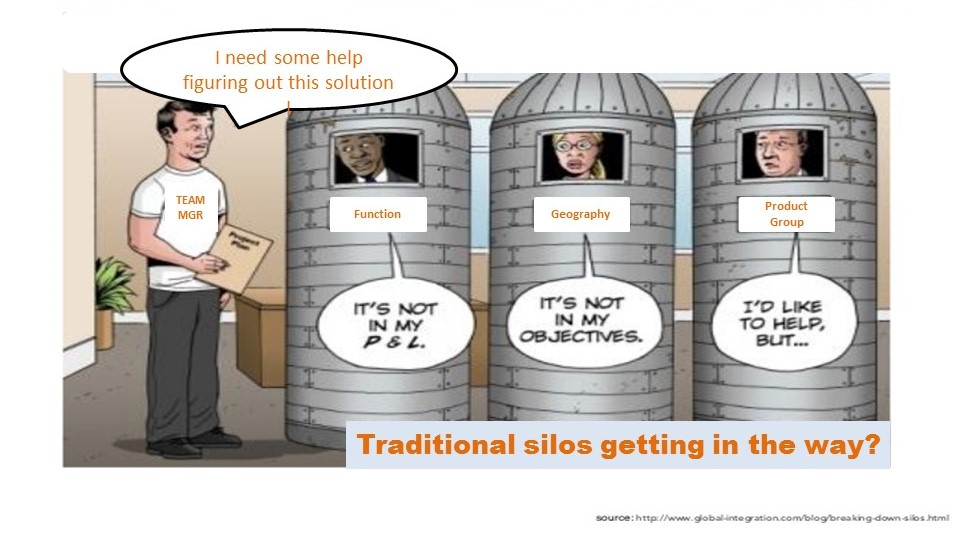What are Silos Costing You?
If you were to drop everything right now and walk around your organization, wander through the halls into the sales department, pause at the marketing team, stop at the IT desk, the product group, customer service, human resources, supply, distribution, and finance, asking each one how they understood the vision, mission, and core values of your company, would their answers align? Would they be able to explain how the priorities of their own departments serve the priorities of the organization as a whole? Would they claim to work closely with other teams in order to achieve the goals of the business?
Over many years of consulting with clients, we have found that the answer to most of these questions is, no. More often than not, the functions of a business are isolated from one another. Departments pursue their own goals. Resources are not shared. Metrics are sequestered. Teams work in silos, rather than together. And because these practices take root over time and often unconsciously, when the problem does finally surface in the form of stalled growth, poor execution on important initiatives, or simply a breakdown in communication across the company, a siloed mentality is already deeply entrenched within the culture of the organization.
In our experience, one of the main reasons that teams slip into this siloed, or ad hoc, approach has to do with a failure on the part of leadership to foster a growth mindset across the company. (To learn more about your particular leadership style, take a look at our leadership assessment) Instead, each function works toward its own end, unable to see how its initiatives intersect with the initiatives of others. Maybe sales and marketing are working well together to create demand and sell a new product, but because there is no communication to operations and distribution they can’t supply it. Because there is no true sense of the collective, the company and the customer lose.
While there is no simple fix for creating a culture of collaboration, there are certain steps that begin to loosen the grip of the silo. When working with clients, we stress the value of the company-wide growth plan as an important step in reversing the isolationist mentality that keeps teams divided. While it may share certain elements with the financial plan or a budget projection, its scope is much wider and its impact is much more significant.
The company-wide growth plan takes a comprehensive stance as it identifies priorities and builds alignment across departments of the organization that may otherwise appear to have little overlap. It helps leadership get clear on the vision, mission, and core values of the company and easily communicate them across functions. It uncovers the most important initiatives that will be the foundation to future growth. It allows each team to understand how resources can be shared in order to achieve the highest priority goals.
The payoff for taking the time to create a company-wide growth plan cannot be overstated. On average, our clients discover 25-45% more growth opportunities once they shake free of the siloed mentality and embrace a cross-functional mindset. (For more on building a growth mindset, complete our Mindset Strengthsfinder Exercise) When leadership is able to inspire the shift from silos to collaboration, innovation often thrives and teams become more aligned, discovering opportunities for growth, as well as becoming better prepared for challenges and pitfalls. And it’s never too early or too late to make these critical changes. From young companies just starting out, to well-established businesses that are preparing for an acquisition, to transitions in leadership where a parent is retiring and handing the keys of the business to the next generation, establishing alignment across functions is essential.
One of the first steps to enacting these important changes is to simply take stock of where each function stands within your business.
By answering these five questions, you begin the process of mapping the future of each function, identifying points of intersection between teams and prioritizing initiatives across the entire organization. You may also start to quantify the upside to better collaboration on your P&L.






